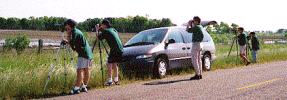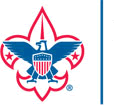Requirement 8
8. Do ONE of the following:
a. Go on a field trip with a local club or with others who are knowledgeable about birds in your area.
1) Keep a list or fill out a checklist of all the birds your group observed during the field trip.
2) Tell your counselor which birds your group saw and why some species were common and some were present in small numbers.
3) Tell your counselor what makes the area you visited good for finding birds.
or
b. By using a public library, the internet, or contacting the National Audubon Society, find the name and location of the Christmas Bird Count nearest your home and obtain the results of a recent count.
1) Explain what kinds of information are collected during the annual event.
2) Tell your counselor which species are most common, and explain why these birds are abundant.
3) Tell your counselor which species are uncommon, and explain why these were present in small numbers. If the number of birds of these species is decreasing, explain why, and what, if anything, could be done to reverse their decline.

Option 8a.
Birding with others is great way to get started! Many eyes and ears find more birds, provided you help keep the group quiet to avoid scaring the birds. And having an expert along helps you learn. To find a field trip near your home, check the links listed under requirement 5. Use this link to jump back to Requirement 5:
Requirement 5
Option 8b.
For those of you far from any bird club, the Christmas Bird Count (CBC) is an annual event to see how many birds are in a given area in December. Since some have been conducted for a hundred years, they show long term trends in bird population. You can access the CBC database online through the link below.
Once there, select Historical Results from the righthand column. You can then select “Make a graph” to show the CBC results for a species for several years.
Online Christmas Bird Count – Click on the CBC Database and read the help file.


